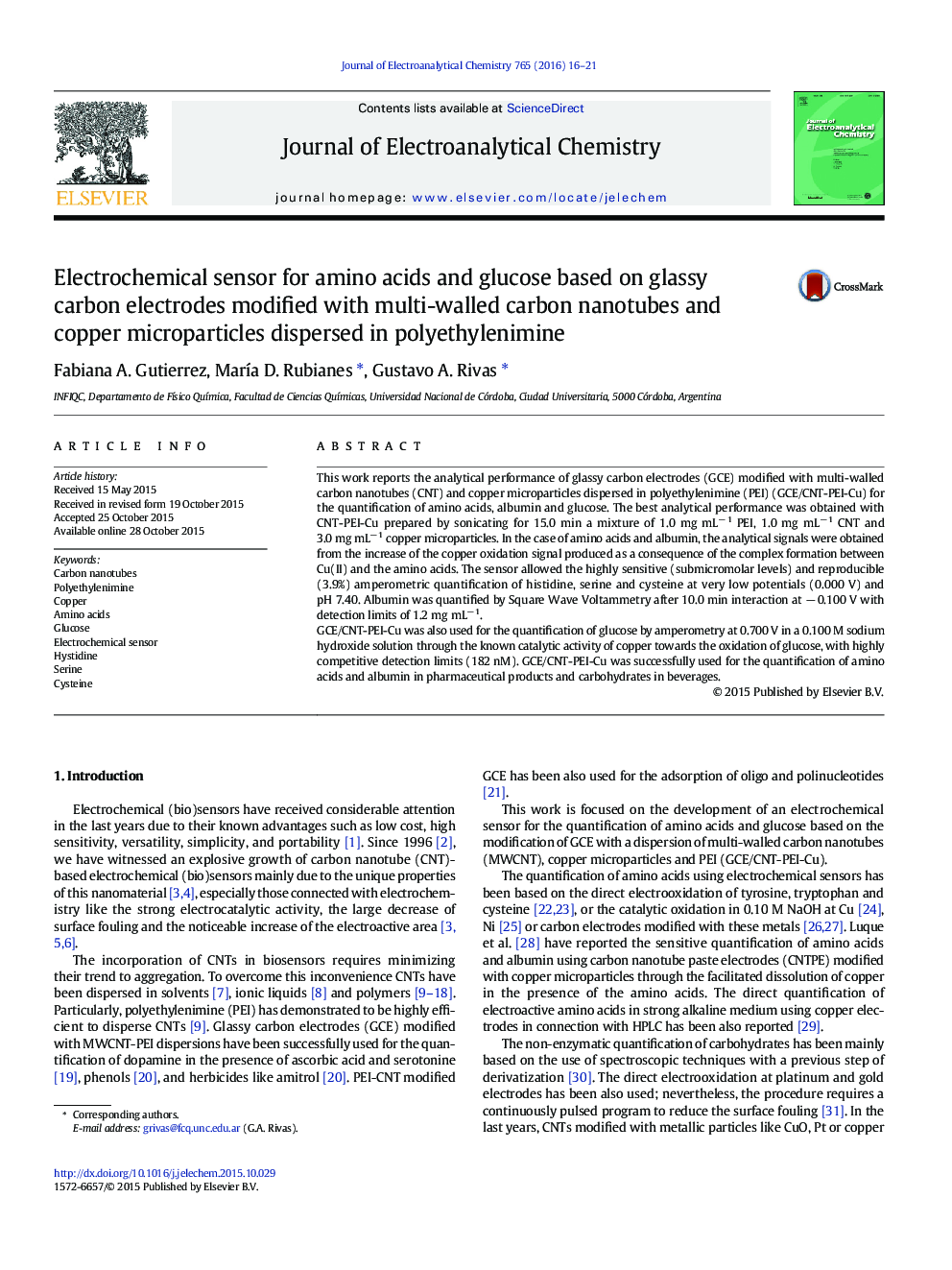| Article ID | Journal | Published Year | Pages | File Type |
|---|---|---|---|---|
| 218028 | Journal of Electroanalytical Chemistry | 2016 | 6 Pages |
•The integration of CNT, PEI and Cu allows the robust deposition at GCE.•The complex formation between amino acids and Cu facilitates the dissolution of Cu.•GCE/CNT–Cu-PEI allows the detection of electroactive and non-electroactive amino acids.•Amino acids quantification can be done at low potential and physiological pH.•The presence of Cu and CNT allows the sensitive amperometric detection of glucose.
This work reports the analytical performance of glassy carbon electrodes (GCE) modified with multi-walled carbon nanotubes (CNT) and copper microparticles dispersed in polyethylenimine (PEI) (GCE/CNT-PEI-Cu) for the quantification of amino acids, albumin and glucose. The best analytical performance was obtained with CNT-PEI-Cu prepared by sonicating for 15.0 min a mixture of 1.0 mg mL− 1 PEI, 1.0 mg mL− 1 CNT and 3.0 mg mL− 1 copper microparticles. In the case of amino acids and albumin, the analytical signals were obtained from the increase of the copper oxidation signal produced as a consequence of the complex formation between Cu(II) and the amino acids. The sensor allowed the highly sensitive (submicromolar levels) and reproducible (3.9%) amperometric quantification of histidine, serine and cysteine at very low potentials (0.000 V) and pH 7.40. Albumin was quantified by Square Wave Voltammetry after 10.0 min interaction at − 0.100 V with detection limits of 1.2 mg mL− 1.GCE/CNT-PEI-Cu was also used for the quantification of glucose by amperometry at 0.700 V in a 0.100 M sodium hydroxide solution through the known catalytic activity of copper towards the oxidation of glucose, with highly competitive detection limits (182 nM). GCE/CNT-PEI-Cu was successfully used for the quantification of amino acids and albumin in pharmaceutical products and carbohydrates in beverages.
Graphical abstractFigure optionsDownload full-size imageDownload as PowerPoint slide
